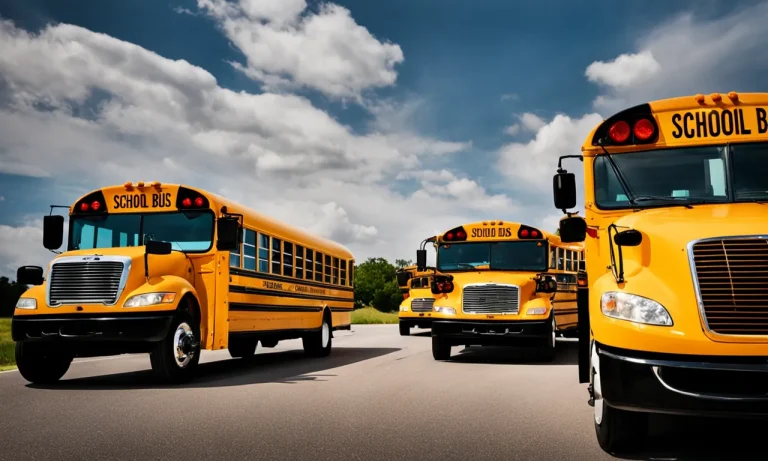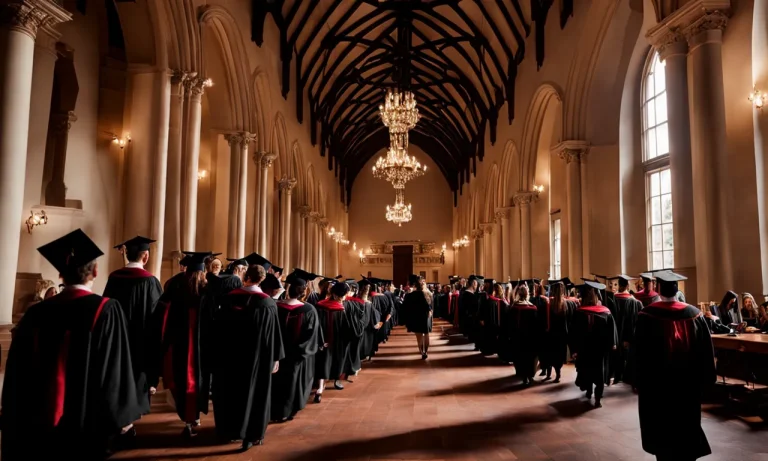If you’re a baseball fan, you’ve probably wondered just how fast those pitchers at the high school level can throw. While major league hurlers routinely hit speeds over 90 mph, how do the velocities of top high school players compare?
In this comprehensive guide, we’ll take an in-depth look at pitching speeds at the prep level. We’ll start by giving a quick answer to the main question.
If you’re short on time, here’s a quick answer: The fastest high school pitchers can throw around 90-94 mph. However, most top high school pitchers throw between 80-88 mph.
What is Considered a Good High School Pitching Speed?
High school baseball pitchers are known for their ability to throw fast pitches and overpower hitters. However, what is considered a good pitching speed at the high school level can vary depending on several factors, including age and skill level.
Let’s take a closer look at the different aspects of high school pitching speed.
View this post on Instagram
Average High School Pitching Speeds
The average pitching speed for high school baseball players typically ranges from 70 to 85 miles per hour (mph). This speed is considered respectable and can be effective in keeping hitters off balance.
However, it’s important to note that there are many exceptional high school pitchers who throw even faster.
Speeds for High School Pitchers by Age
Pitching speeds can vary based on the age of the high school pitcher. Younger pitchers may not throw as hard as their older counterparts due to physical development and experience. Here are the average pitching speeds for different age groups:
- Freshmen: 65-75 mph
- Sophomores: 70-80 mph
- Juniors: 75-85 mph
- Seniors: 80-90+ mph
It’s important to note that these are average speeds, and there are always exceptions. Some freshmen or sophomores may throw harder than the average senior, depending on their natural ability and training.
Speeds of Elite High School Pitchers
Elite high school pitchers are the cream of the crop and often throw with exceptional velocity. These pitchers can consistently reach speeds above 90 mph and even touch 95 mph or higher. Their ability to throw with such velocity sets them apart and attracts attention from college recruiters and professional scouts.
In fact, some of the top high school pitchers have been recorded throwing over 95 mph, putting them in a league of their own. These pitchers have exceptional arm strength and mechanics, allowing them to generate incredible power and speed on their pitches.
It’s important to remember that pitching speed is just one aspect of a pitcher’s ability. Control, movement, and pitch selection are also crucial factors in determining a pitcher’s effectiveness.
While having a good pitching speed can be advantageous, it’s equally important for pitchers to develop a well-rounded skill set to succeed at the high school level and beyond.
View this post on Instagram
How Do High School Pitching Speeds Compare to Other Levels?
Compared to Youth Leagues
When it comes to youth baseball leagues, high school pitchers often showcase impressive throwing speeds. While the exact average speed can vary, it is not uncommon to see high school pitchers throwing in the range of 70-80 miles per hour.
This is significantly faster than what you would typically see in youth leagues, where pitchers may throw in the range of 50-60 miles per hour. The increased speed at the high school level can be attributed to the players’ improved physical development, better mechanics, and increased practice and training.
Compared to College
As high school pitchers transition to college baseball, the pitching speeds tend to increase even further. College pitchers are generally expected to throw in the range of 85-95 miles per hour, with some reaching speeds over 100 miles per hour.
This higher velocity is a result of the more competitive nature of college baseball and the rigorous training programs that help pitchers develop their skills. College pitchers often have access to advanced sports science techniques, specialized coaching, and strength and conditioning programs that contribute to their increased throwing speeds.
Compared to Major League
When comparing high school pitching speeds to those in the major leagues, there is a significant difference. Major league pitchers regularly throw in the range of 92-95 miles per hour (usually 93 mph), with some elite pitchers reaching speeds over 100 miles per hour.
The fastest recorded pitch in major league history was thrown by Aroldis Chapman, who reached a blazing 105.1 miles per hour. The increased velocity in the major leagues can be attributed to the exceptional athleticism, specialized training, and years of experience that these professional pitchers possess.
It is important to note that these speed ranges are generalizations, and there can be variations among individual pitchers at each level. Additionally, factors such as technique, mechanics, and control also play a significant role in a pitcher’s effectiveness, not just their throwing speed.
What Affects How Fast High School Pitchers Throw?
Arm Strength and Athleticism
One of the key factors that affect how fast high school baseball pitchers throw is their arm strength and athleticism. A stronger and more developed arm allows pitchers to generate greater velocity on their throws.
This can be achieved through regular strength training exercises that focus on the upper body, such as weighted ball drills, resistance band workouts, and shoulder strengthening exercises. Additionally, overall athleticism plays a role in a pitcher’s ability to generate power and speed in their throws.
A combination of strength, flexibility, and coordination can contribute to a pitcher’s ability to throw at higher speeds.
Mechanics and Delivery
The mechanics and delivery of a pitcher also play a significant role in determining their throwing speed. Proper mechanics involve the correct positioning of the body, arm, and leg during the pitching motion.
Pitchers with efficient mechanics are able to transfer more energy from their body to the ball, resulting in faster throws. Coaches and trainers often work with high school pitchers to fine-tune their mechanics and delivery, focusing on aspects such as stride length, arm action, and follow-through.
By optimizing these elements, pitchers can maximize their velocity and improve their overall performance on the mound.
Other Physical Factors
Aside from arm strength and mechanics, there are other physical factors that can affect how fast high school pitchers throw. One such factor is height. Taller pitchers typically have longer limbs, which can allow for a longer throwing motion and potentially generate higher velocity.
Another factor is body composition. Pitchers with a higher percentage of muscle mass tend to generate more power in their throws compared to those with higher body fat percentages. Additionally, flexibility and range of motion in the shoulder and hips can also impact the speed at which a pitcher throws.
It’s important to note that while these factors can influence throwing speed, there are exceptions to every rule. Some pitchers may possess exceptional velocity despite not fitting the typical mold. Each pitcher is unique, and a combination of various factors will ultimately determine their throwing speed.
View this post on Instagram
How to Increase Pitching Velocity in High School
For high school baseball pitchers, increasing pitching velocity is often a top priority. The ability to throw the ball faster can give pitchers a competitive edge and catch the attention of college recruiters and professional scouts.
Here are some effective ways to increase pitching velocity in high school:
Strength Training
Strength training plays a crucial role in improving pitching velocity. Pitchers should focus on exercises that target the muscles used in pitching, such as the legs, core, and shoulders. Squats, lunges, deadlifts, and medicine ball throws are just a few examples of exercises that can help develop explosive power.
It is important for pitchers to work with a qualified strength and conditioning coach to ensure they are using proper form and technique.
Improving Mechanics
Proper pitching mechanics are essential for generating maximum velocity. High school pitchers should work on their mechanics with a knowledgeable pitching coach or instructor. This includes working on correct arm action, hip rotation, and leg drive.
By optimizing their mechanics, pitchers can efficiently transfer energy from their legs to their arms, resulting in increased velocity.
Long Toss and Sprint Work
Long toss exercises can help improve arm strength and increase throwing distance. By gradually increasing the distance of their throws, pitchers can build up arm strength and develop a more powerful throwing motion.
Additionally, incorporating sprint work into training can improve overall athleticism and explosiveness, which can translate to increased pitching velocity.
Recovery and Arm Care
Proper recovery and arm care are vital for maintaining and improving pitching velocity. Pitchers should prioritize rest and recovery, ensuring they get enough sleep and allowing their bodies time to heal between pitching outings.
Additionally, implementing a comprehensive arm care program can help prevent injuries and promote longevity in a pitcher’s career. This may include exercises such as band work, stretching, and foam rolling.
By incorporating these strategies into their training routine, high school pitchers can work towards increasing their pitching velocity and reaching their full potential on the mound.
Should High School Pitchers Worry About Throwing Too Hard?
As high school baseball players strive to improve their skills and catch the attention of college recruiters or professional scouts, one question often arises: should high school pitchers worry about throwing too hard?
While throwing with velocity can certainly be beneficial, there are several factors that pitchers should consider to ensure their long-term success and avoid potential injuries.
Overuse Injuries
One of the primary concerns for high school pitchers throwing too hard is the risk of overuse injuries. When pitchers consistently throw at maximum effort, their arm muscles and ligaments can become overworked and fatigued, leading to strains, tears, or even more severe injuries like Tommy John surgery.
Overuse injuries account for nearly half of all sports injuries among young athletes.
It’s important for high school pitchers to strike a balance between throwing with velocity and allowing their bodies enough time to rest and recover. This can be achieved through proper pitch counts, regular days of rest between appearances, and following a structured throwing program designed by a qualified pitching coach or trainer.
Proper Coaching and Training
Having access to proper coaching and training is crucial for high school pitchers who want to maximize their potential without sacrificing their long-term health. A knowledgeable pitching coach can help pitchers develop proper mechanics, which can improve velocity while reducing the risk of injury.
Additionally, a strength and conditioning program tailored specifically for pitchers can help build the necessary strength and stability to handle the demands of throwing hard.
Developing as a Pitcher vs Thrower
While throwing hard can certainly catch the eye of scouts and coaches, it’s important for high school pitchers to remember that velocity alone does not guarantee success. Developing as a complete pitcher involves mastering a variety of pitches, learning how to command the strike zone, and understanding how to read and adjust to hitters.
Instead of solely focusing on throwing as hard as possible, high school pitchers should strive to become well-rounded athletes who understand the mental and strategic aspects of the game.
This can be achieved through studying the game, working on pitch sequencing, and seeking guidance from experienced coaches who can help pitchers refine their skills.
Conclusion
In summary, while elite high school pitchers can reach speeds up to the low 90s, most prep hurlers throw between 80-88 mph. Pitching velocity depends on several factors like mechanics, strength training, and genetics.
High school pitchers should focus on healthy development rather than overexerting their arms to reach maximum speeds. With proper training and fundamentals, pitchers can enhance velocity during high school and beyond.






